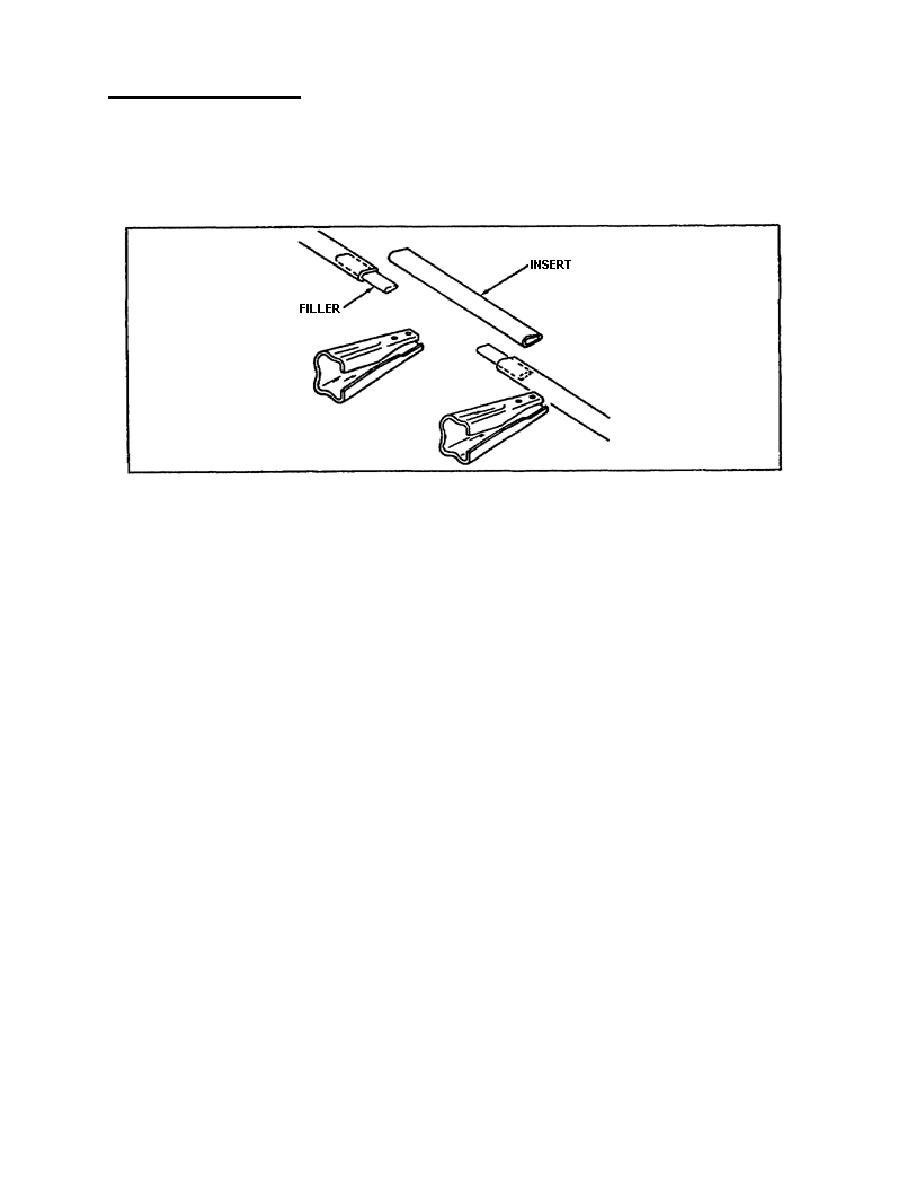
Repair Near a Rib.
To repair damage occurring at or near a rib,
first remove sufficient trailing edge material to allow a complete
splice to fall between the ribs.
This usually requires two splices
joined by an insert piece of similar trailing edge material or of
formed sheet stock. The repair is similar to that for damage between
ribs. Figure 2-18 illustrates a trailing edge repair at a rib.
Figure 2-18.
Trailing Edge Repair Near a Rib.
SUMMARY
The elements for stringer repair consists of reinforcement and filler
splices and rivets. Reinforcement splices must extend at four times
the width of the stringer leg on each side of the damaged area.
A
reinforcement splice's cross-sectional area strength must equal or
exceed the stringer's.
Damage must be trimmed to a smooth contour
and corner radii.
The filler patch must be of proper thickness and
shape and 1/32 inch shorter in length than the trimmed out section.
This allows 1/64 inch clearance between the stringer stub ends and
the filler splice ends to prevent stress development between the
ends.
When possible, maintain the original rivet pattern in the
repair.
This is achieved by having the trimmed-out area lie midway
between two rivets.
This repair is authorized only when the damage
does not exceed two-thirds of the width of one leg of the stringer
and is not longer than 12 inches. If the damage is greater than two-
thirds of the leg width, the repair method shown in Figure 2-11 must
be used.
Longeron repair is somewhat similar to stringer repair; however,
heavier rivets or bolts are used because of the longeron's greater
weight. If bolts are used, bolt holes must be drilled for a light-
drive fit.
Rivet spacing on longeron repairs must be kept between
four and six rivet diameters.
84
AL0992
Repair on spars may not be permitted because spars are highly
stressed members.
If the repair is permitted, the workmanship must



 Previous Page
Previous Page
